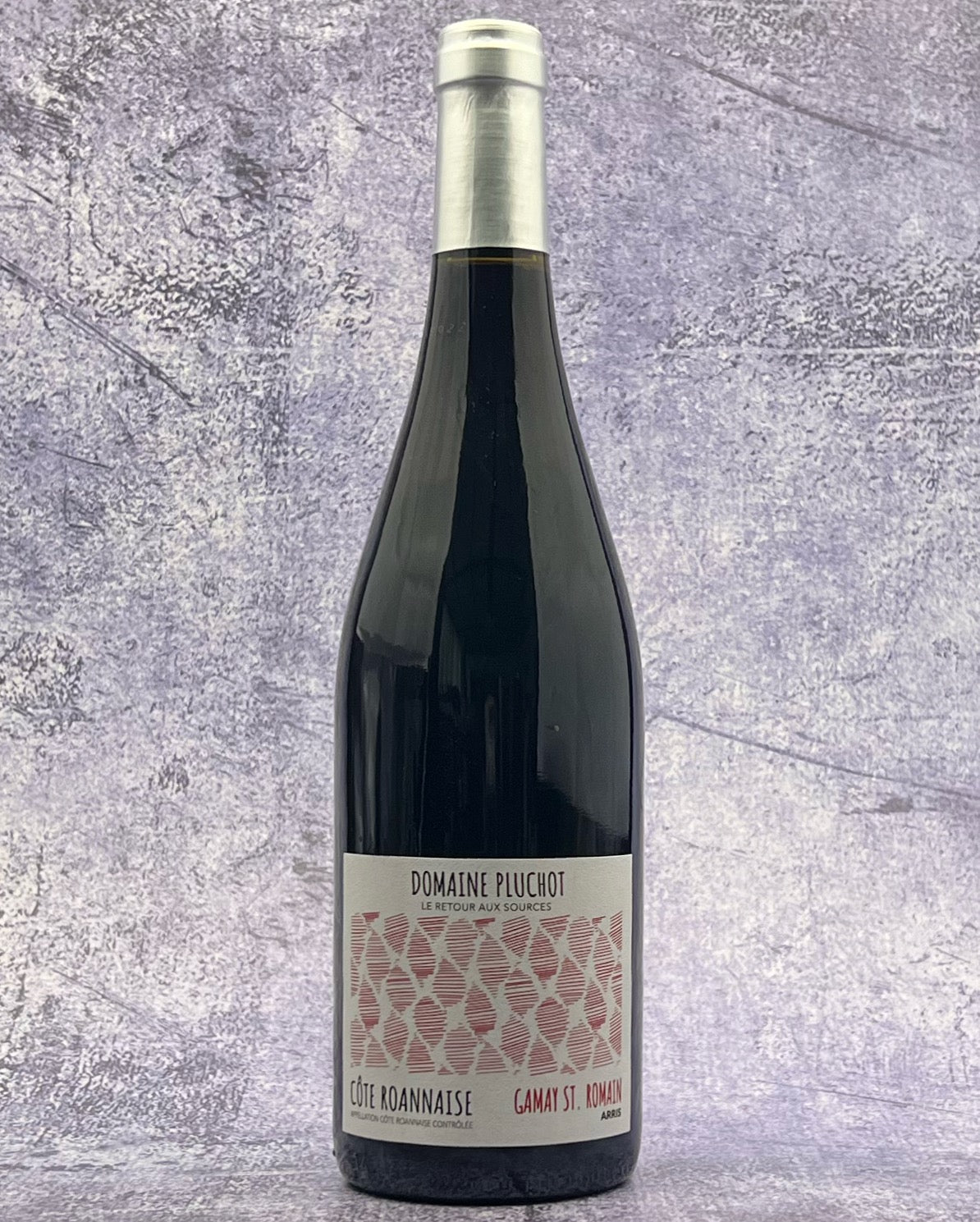Description
From: Côte Roannaise, Loire Valley, France
Varietal: Gamay St-Romain
Taste: This charming, cheerful wine should be served slightly chilled (or at cellar temperature) for it to show its best. In the glass, this little gem is immediately friendly, with lush, dark red berries and plum over crushed violet and stone. On the palate, black cherries, plum skin, ripe red raspberry intermingle with a savory side. There’s a distinctive note of umami (think: mushroom medley, yum!) and pepper which along with its core of minerality helps to reign in all the juicy fruit. Fruit, slate, and a spicy finish leaves your palate refreshed and ready for another glass before you know it.
Pairing: You could go with the classics and never be disappointed. Pâté en Croûte, a Charcuterie & Fromage board, Poulet Roti with sautéed mushrooms, mushroom risotto, mushroom pasta… anything with mushroom and butter, really. Aside from those, salmon or tuna steaks, pizza, dishes around pork, turkey or poultry & potatoes served as pommes frites, aligot, or anna. You get the idea. We’re sharing a classic French salad recipe below for a French Chicken Liver & Green Bean Salad by David Tanis, check it out!
French Chicken Liver and Green Bean Salad With Garam Masala
By David Tanis
About. EDGAR & MARC-ANTOINE PLUCHOT. A story of brothers.
Le Retour aux Sources is the somewhat crazy and courageous project of the Pluchot brothers. Edgar, after a BTS (degree in viticulture and oenology) in wine in Mācon-Davaye, developed his knowledge in the vineyard of Macon, St-Veran and Pouilly-Fuissé for four years.
He returned in 2005 to his grandparents' village in St Alban Les Eaux (42). For three years, he built and developed the vineyard with the help of his brother Marc-Antoine and their relatives. Marc-Antoine joined the estate in 2008 and together created the EARL Le Retour aux Sources.
Today, by hard work they have tripled the area of the vineyard and exploit (work) 8 (now I think 9) hectares in AOP Côte Roannaise for reds and rosés (Gamay Saint-Romain) and in Vin de France for white (Chardonnay and Pinot Gris).
They are also continuing their conversion to organic farming, officially certified in 2023. The rows are grassed with green manure and the soils are worked. The two brothers dare to assert their originality and thus bring an undeniable added value for the development of the Côte Roannaise appellation.
The area. Technically part of the Loire Valley but actually much closer to Beaujolais, it is 50 km west of Morgon in the Monts de Madeleine, close to the Loire River's source in the Massif Central. Gamay reigns supreme in this high elevation site perched on a vein of granite, and the domaine's myriad single parcels capture nuanced expressions of place and make for extremely compelling wines.
Gamay Saint Romain tends to have smaller bunches and berries that are more prone to millerandage or being shot (aka hens and chickens - berries of differing sizes (regular sized fruit referred to as hens), the smaller fruit (chickens) without seeds) a reference to than the more commonly planted Gamay à jus noir. This often translates to a more concentrated expression of the fruit.
The high vine density allows them to keep yields per vine low and quality very high. It’s a vineyard management philosophy that encourages vines to grow their root systems deep as the vines compete with each other for limited water and nutrients and the character of the fruit is driven by the subsoil.
Terroir: Plot of 2.4 hectares exposed East on granite soil in Villemontais at the place called Arris.
Altitude: 500M
Vine age: Plot planted in 2008
Vinification and elaboration: Sorting at the entrance to the cellar, total destemming, classic 12-day maceration in indigenous yeasts.
Relatively short elevage in tanks.

